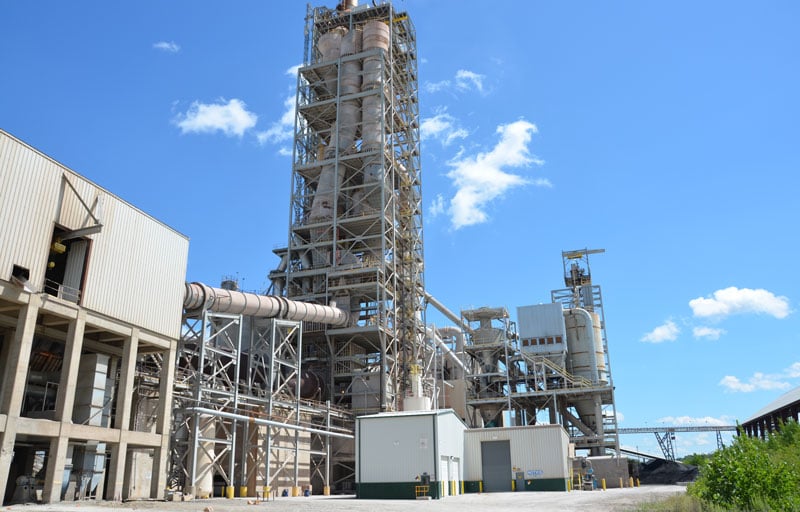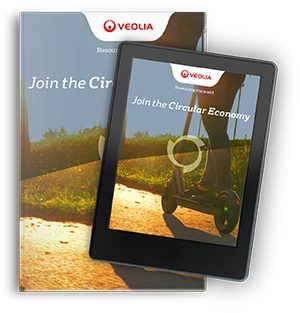There’s a saying that big things come from small beginnings. If you start with small actions and build on them, momentum increases. Big ideas can begin the same way and become larger and more widespread.
The circular economy is one really big idea. It involves shifting the way we do business and transforming the basis of our economy to become more of a closed loop, sustainable system; it’s a massive idea! It’s so big that it might seem impossible to comprehend how it will be implemented or how it can even apply to your business.
The good news is, you don’t have to worry so much about the massive picture or about moving entire economies to a more circular model. All you have to think about is how your particular operation can adopt strategies that are beneficial, profitable, and sustainable for your business.
What is the circular economy, anyway?
At its most basic level, the circular economy is driven by the idea of extracting the maximum value possible from existing goods and resources in order to lessen our dependence on new, limited resources. In its various forms, this effort includes building higher quality products to extend their service life, making use of goods or products that would otherwise be sitting unused, taking the byproducts from one industrial process and using them as feedstock in another, and generally reducing the amount of byproduct and useful material that we dispose of as much as possible by creating more closed loop systems.
For many manufacturing or industrial businesses, the process really comes down to finding creative solutions for recycling and waste management. Here are several examples of beneficial reuse solutions in action.
Beneficial reuse of contaminated stormwater
There are ample opportunities for reusing materials or putting what was previously thought of as “waste” towards productive use. You just need to recognize these opportunities when they present themselves or work with a creative environmental services provider. One example they may propose is using your non hazardous spill containment stormwater to replace potable water for dust suppression in various types of pugmills.
Dust suppression is a means of converting a dusty material into one that is nearly dust free. Liquid dust suppression is widely used in many industrial applications, ranging from concrete production to handling bulk solids in order to prevent the loss of product, avoid combustion, and limit the severity of respiratory hazards on the job.
Spill containment stormwater is produced when it rains at an industrial plant on an outside area where chemicals are stored. Once the rainwater mixes with the chemical, then all of the liquid in the area needs to be properly managed and disposed of in a safe manner, even if the water-chemical mixture is non hazardous.
By using spill containment stormwater for liquid dust suppression in a pugmill, you’re able to kill two birds with one stone. On the one hand, using the contaminated rainwater means the pugmill operator will not have to buy and use potable water, which would involve using additional resources. On the other hand, the contaminated water is properly managed for disposal when used instead of potable water for dust suppression.
The chemical spill is cleaned up, dust is suppressed in pugmill applications, and the stormwater with the potentially harmful chemical is managed correctly. All of these actions are possible by using existing resources.
Using crushed glass as a raw material substitute
We produce a lot of glass waste. In fact, the fourth largest electronic waste category is the leaded glass found in cathode ray tubes (CRTs) used in televisions and computer monitors. Depending on regulations, this glass has to be treated before the material can be sent to a landfill. To become more sustainable, meet regulations, and cut costs associated with treating the material, generators of leaded glass are looking for alternative disposal methods.
One such alternative is using the glass as a replacement for sand in both cement and hazardous waste kilns. Both use sand either in the production of a product or to condition waste materials for treatment, and leaded glass can serve as a suitable replacement.

As one of the primary materials used in construction, concrete is a fixture of our modern, industrialized world. And sand is one of the main components of concrete. The problem is, mining and washing sand to make it suitable for concrete uses a lot of energy, can be harmful for the environment, and involves the extraction of new, virgin resources.
Using waste glass as a substitute for sand offers several advantages. By using glass instead of sand, we’re able to make use of a large domestic waste stream and utilize existing resources instead of mining new ones. Finally, by turning to glass as a primary ingredient in their concrete, companies can significantly cut production costs compared with mining and washing sand. When it comes to hazardous waste kilns, generators of the leaded glass can avoid landfills and receive beneficial reuse credits in the process.
Spent lime substitution
At its heart, the circular economy is about finding and creating connections between previously separate materials and production processes. Lime is a basic industrial chemical that is used as a component in many other chemical processes. Once used for its chemical properties, spent lime needs to be disposed of, which usually means sending to a landfill.
However, often times the spent lime still contains percentages of active or free lime. This material can be reused at certain hazardous waste kilns where it serves as a raw material substitute for virgin lime in order to effectively neutralize compounds found in a waste stream. By putting the spent lime to further use, companies are extracting greater value from existing resources, cutting down on the need for new resources, and helping slow the rate at which landfills are filled. Beneficial reuse credits are also available for this reuse option.
There are circular opportunities in every industry
Almost every industrial or production process will result in some type of byproduct. One of the keys to building a circular economy is recognizing the value that those byproducts can still offer. There are creative, sustainable, cost effective, and profitable solutions for recycling and waste management in every industry.



